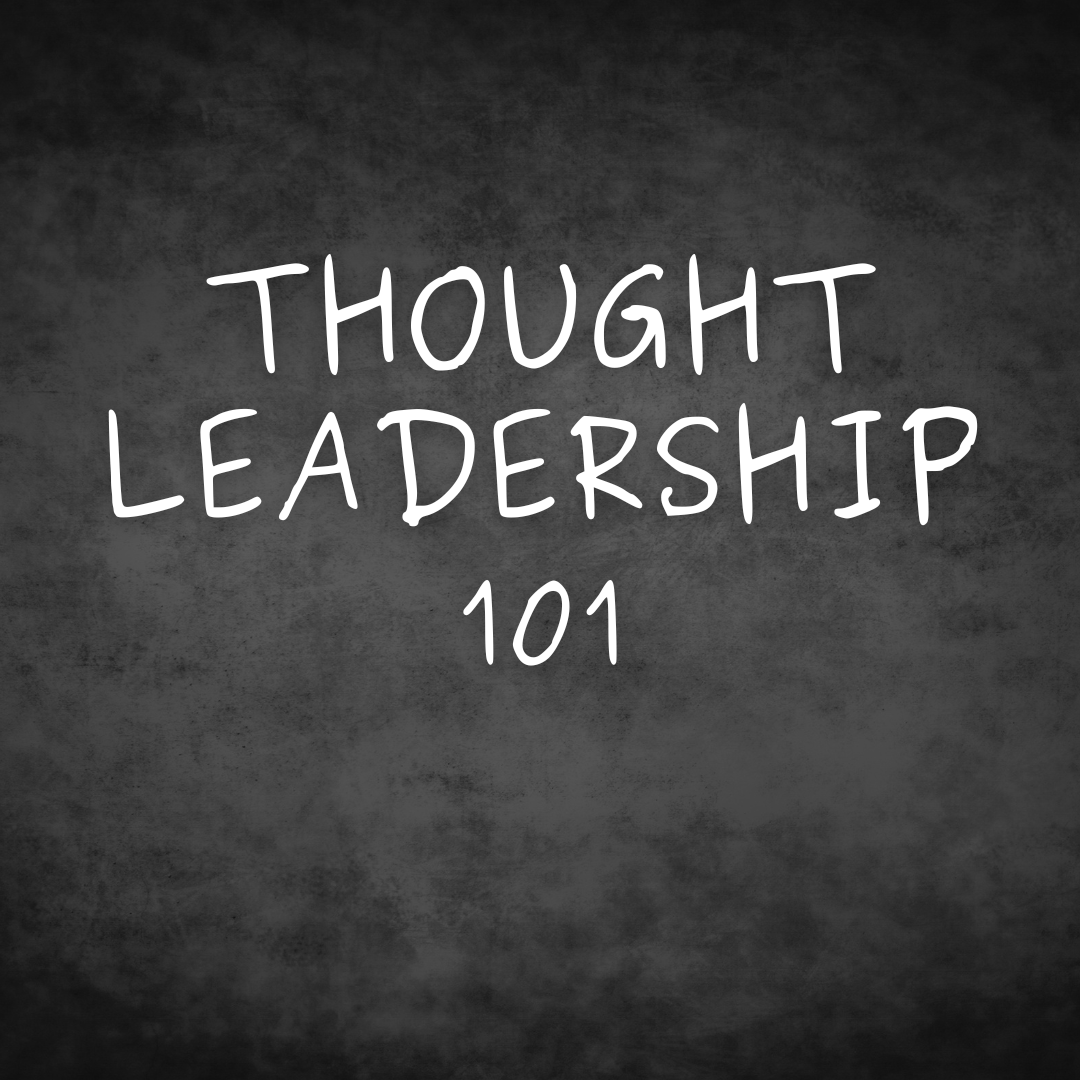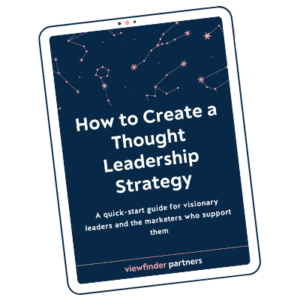Who gets to be a “thought leader”? Let’s go back to basics and define what it means to be a thought leader, who can be a thought leader, and how YOU (or the people you support) can find your voice as a thought leader.
Who is a thought leader?
First of all, who counts as a “thought leader,” anyway?
Do you have to be big on LinkedIn? Do you have to be the headliner on big stages at major conferences? Do you have to be a controversial figure? Is this a term reserved only for people with a “C” at the beginning of their job title?
Nah. None of those stereotypes get to the heart of what it means to do the work of thought leadership.
I define a thought leader as:
- A PERSON (not a company or organization)
- Who thinks in public,
- Shares their EXPERTISE (what they know)
- their PERSPECTIVE (how they know it),
- And has a VISION for the future (what’s coming next)
That definition is pretty simple. But doing those things (sharing what you know, how you know it, and what’s coming next — in public, under your own name, not under the cover of your company or a vague “brand voice”)? That’s a lot more complex.
How to start thinking like a thought leader
If you’re interested in sharing your thinking, reflection is the only place to start. Before you try to start packaging your ideas (or even write a LinkedIn post), try reflecting on some basic questions about your work.
Reflect on your expertise
- What’s the most important thing you’re working on right now?
- What makes you the most proud about your work?
- What have you learned a lot about in the past year?
Reflect on your perspective
- What do you want people to know? If you could talk to a group of people who NEED to hear your message, what would you say?
Finish these sentences:
- The biggest opportunity in the industry is _____________.
- The questions I’m asking are: ______________.
Reflect on your vision
- What do you think will change about your work in the next 5 years?
- How are you building that change?
- How do you hope people will think differently in 5 years from now?
Reflection is generally the hardest part. Once you’ve dug into your own expertise, perspective, and vision, then you can think about packaging those ideas and sharing them with others.
Three kinds of thought leaders
If the idea of sharing your ideas feels overwhelming, consider how you might show up as one of three thought leadership personalities: a beacon, curator, or challenger.
Beacon
Beacons work and think in public and shine as an example to others. Beacons offer expertise, guidance, advice, and perspective.
You’re a beacon if you…generously share what you’re learning.
A prompt to think like a beacon: What’s a hard decision you’ve made recently? Think through how you arrived at that decision, the loose ends you’re still thinking about, and what you’ve learned.
–
Curator*
Curators connect people and resources. They’re excellent researchers and natural connectors. They find the best data and information and can connect you to the people you need to know. They create community through their constant connecting. A lot of interview podcasts are really curation — connecting your audience with people you know and their ideas.
You’re a curator if you…find yourself saying “you really need to meet Brittany” or “I just read a study about that.”
A prompt to think like a curator: Make a list of the resources you’ve been relying on lately to do your job. Is there an article that gave you a new idea? A podcast that introduced you to a new way of thinking?
*I think of curators as the entry point to thought leadership. Curation is low-risk and helpful, and doesn’t require leaning too heavily on your own bold claims.
–
Challenger
Challengers offer new perspectives and start conversations. They question norms, push back on the status quo, and give us a new way to think about old ideas.
You’re a challenger if you…ask “why?” a lot. Want to create something new. See a new path forward.
A prompt to think like a challenger: What’s your most controversial idea? Explain that idea in 50 words or less.
The bottom line: You don’t have to wait for someone else to step up and say what they’re thinking. You have the power to do that right now.
Start with reflection, then think about how you can share your expertise, perspective, and vision to help others and shift the conversation in the direction you think it should go.







